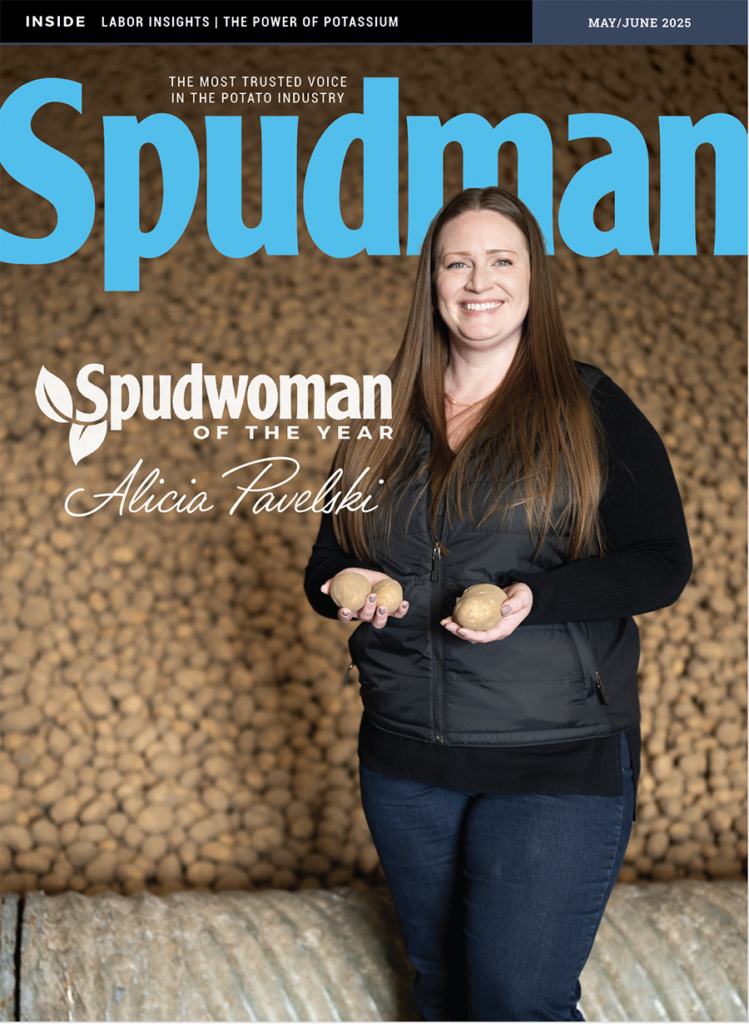First-ever comprehensive industry survey gives growers a voice
Well, if there are two facts you can definitely take away from our 2009 reader survey, it’s that our readers are not shy in expressing their opinions and their opinions are as diverse as the varieties of potatoes out there.
Keep in mind that reader response surveys are not scientific studies, and it’s only as reliable is its respondents – in this case, Spudman’s readers, the growers. And of course, we believe in the reliability of our readers. The margin of error in our survey is seven.
So, with that rejoinder and clarification, and with no further ado, let’s see what the survey says.
Well over 100 growers resonded to Spudman magazine’s inaugural survey. All are male and 85 percent are over 30 years old.
A little over 66 percent of the 129 respondents planted some acres of fresh potatoes, 39 percent grew frozen or chip, 6 percent were in dehy and 27 percent planted some acres of seed.
In 2009, of the 21 varieties named by growers, Russet Burbank is still the most popular potato, followed by Yukon Gold, Norland, Superior and Russet Norkotah Selections. For 2010 the number of growers for each variety drop a little but the top four remain unchanged with Frito Lay varieties edging out Russet Norkotah Selections.
There was one respondent to the survey who was unequivocal in his opinion of Norkotah varieties. He wrote that the industry needs to get rid of ALL NORKOTAH (in caps) selections.” No other variety elicited any comments, pro or con.
Surprisingly, given the current over supply in the market place and growers unable to even meet their costs of production at the current market price, a clear majority of growers in all four categories are planning on planting the same number of acres or even more acres for the 2010 season.
Yet, growers report they are making a profit of $1,047.12 per acre. At the same time grower cost per acre is $2,858.70. Clearly a lot of inputs go into each acre of potatoes.
When it comes to organic farming, it is clearly in the minority with 15 percent, (16 of 107) that resonded, reporting that they part of their farm is organic.
The lowest percentile of growers planning to plant the same or more acreage was in the fresh category with 83 percent. Process (frozen & chip), Dehy and Seed growers planting the same or more acres report plans to plant higher percentages, at least 88 percent. And yet when asked to specify their concerns for the 2010 season the dominant answer was “overplanting.” Not far behind in second place was the cost of inputs and third was the general state of the economy. Educating buyers and more promotions were also mentioned.
More respondents (3) named President Barack Obama than water (2) as their chief concern for 2010.
A clear majority were planning on keeping expenditures down in 2010. The four categories that growers were thinking of making purchases were: 1) Irrigation Equipment; 2) Potato handling equipment; 3) New general-use tractor; 4) and GPS equipment. Almost a third were making plans of selling their used equipment.
When it comes to new technology over half, 51.7 percent, are using GPS systems but under half report using mobile phones or text messaging out in the field. Twitter has yet to make inroads in the agricultural sector.
So, what can we carefully extrapolate from the 2009 Spudman survey? Based on the responses, potato growers are making a profit and the current glut on the market has not intimidated them from planting more or the same amount of acres. Growers are getting older, nothing unusual there, the entire work force is graying what could be of concern is if there will be sufficient young farmers entering the industry or will the trend be to corporate farms.
This was the inaugural Spudman survey and we plan on making this an annual survey but the future success is ensured only by the participation of you, our valued readers. The data we collect and collate from future surveys will not only a formidable data base for future researchers but it will help us better understand the direction and needs of potato growers throughout North America thereby making our publication a stronger and better source for you. And for that we here at Spudman magazine and Great American Publications owe all that participated in this survey a debt of gratitude and thanks.
Key Findings from the 2010 Reader Survey
– 95 percent of respondents had an adequate supply of labor in 2009.
– Farms on average had 8.5 full-time employees and 20.6 part-time employees. Full-time workers made $13.40 an hour on average, and part-timers were paid $9.32 an hour.
– Growers were more likely to invest in new technology than in buildings or equipment. 52 percent said they would invest in GPS technology this season, 40 percent said they would buy a smart phone and 31 percent said they would use text message updates.
– Only 18 percent of respondents said they be constructing a new building in 2010, and 22 percent said they would buy new land. But 86 percent said they would not sell land and 93 percent said they would not have an auction this season.
– 22 percent of growers said they would be buying a new general-use tractor this season, while 14 percent said they would buy a used tractor. More than 30 percent said they would sell used equipment in 2010.
– Few said they would buy seed cutters (4 percent), planters (10 percent), harvesters (15 percent) or trailers (7 percent)
– They were more likely to buy handling equipment (27 percent), storage equipment (17 percent) and irrigation equipment (39 percent).”














